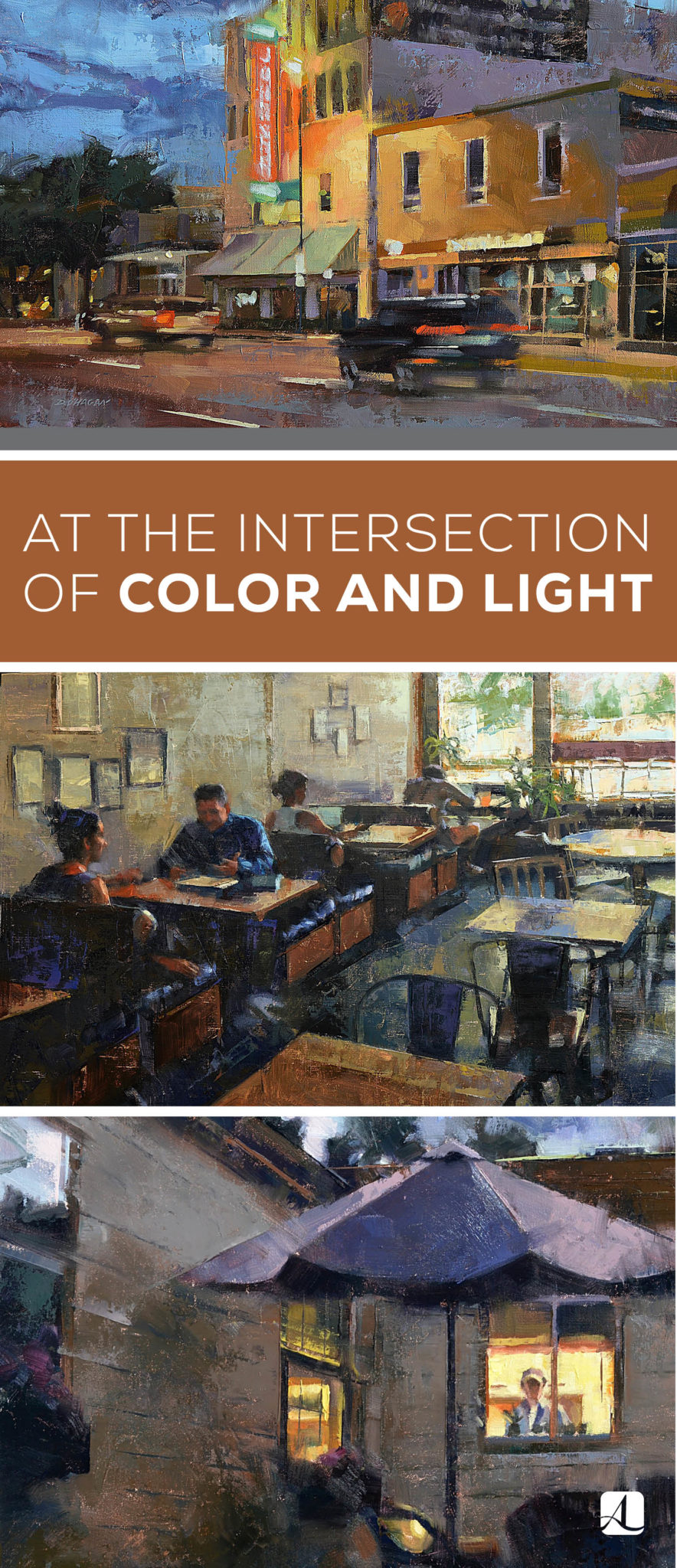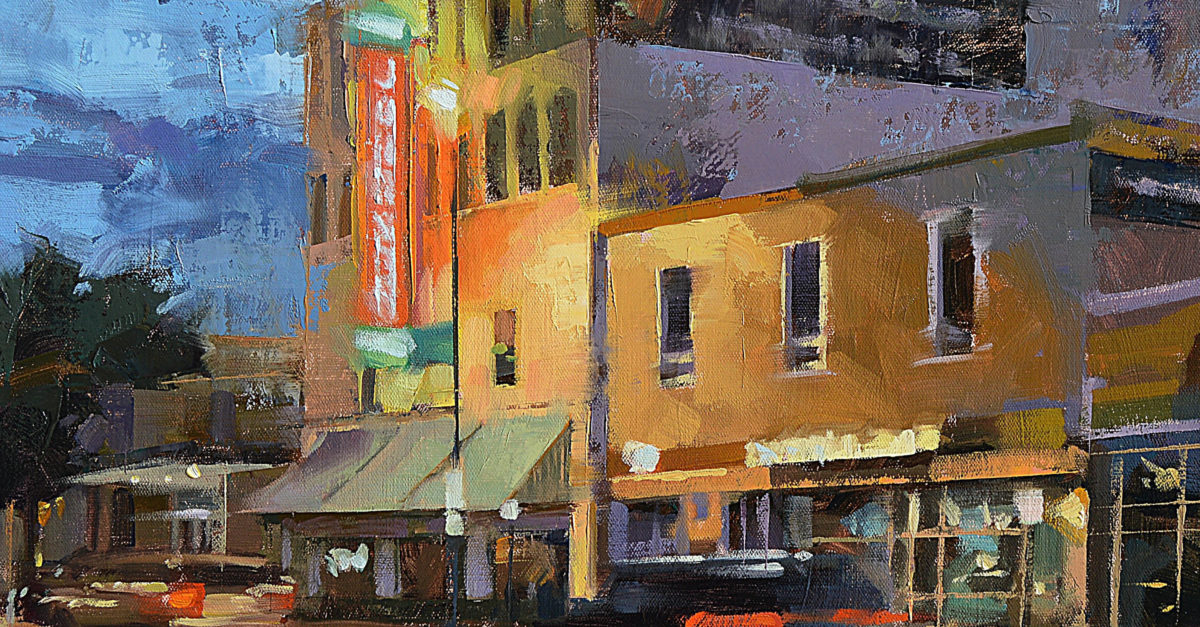The Intersection of Color and Light
Denver-based artist Desmond O’Hagan highlights the importance of travel and new experiences as a conduit to making great artwork.
What did the path to artist look like for you?
I drew and painted all through my childhood and teenage years. However, as a teenager, I couldn’t connect with the concept of being a professional artist, so when I finished high school and started college, I decided to study architecture. I felt that would allow me to be creative and make a living. As I became more involved with architecture, I realized I didn’t care for drafting. (This was pre-computers.) I changed schools and studied graphic design and advertising. I truly enjoyed this direction and worked for an advertising agency after graduating. I learned in the design world that creativity has value, and, after three years, I took a leap of faith and pursued a career in fine art while supporting myself with freelance design jobs.
Where did you grow up? What impression did that leave on you, and how does it carry through in your life now?
My father was in the US Air Force, and our family lived in Germany, Virginia, Alaska, and New Mexico. These were great experiences for a young person, and they gave me a thirst for travel and a desire to seek new experiences. To this day, my travel experiences greatly enhance my art.
Will you talk about a memorable travel experience?
My wife and I were in Collioure, along the coast of Southern France. I’ve always striven to photograph dramatic scenes for reference material, so sometimes I push the envelope in capturing them. I was standing at the end of a concrete pier that very large waves were crashing into. I got the shot, and my wife watched the next big wave drench me and almost knock me off into the water. I guess you do have to suffer for your art.
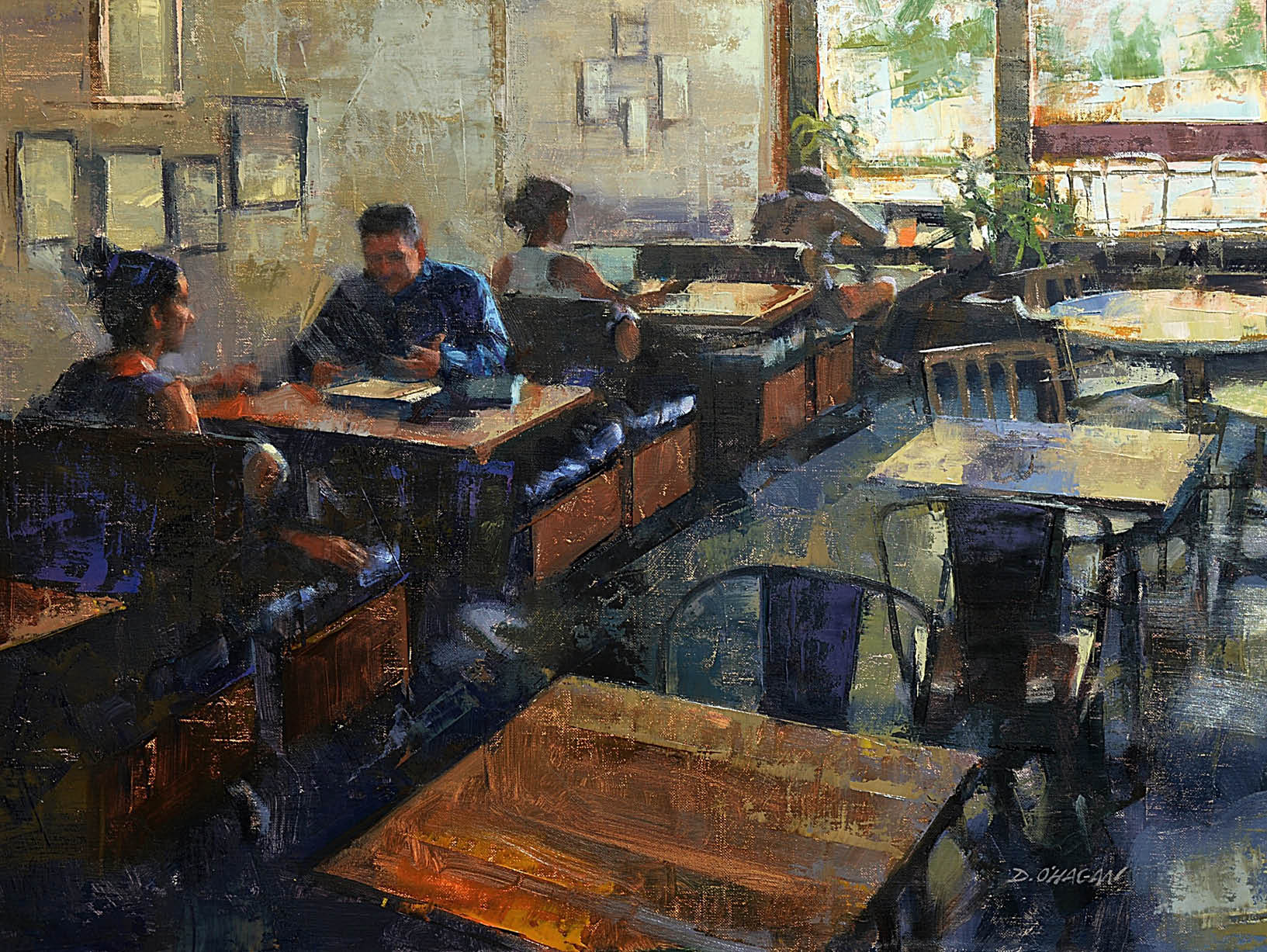
Do you have a life philosophy or motto of sorts that informs how you live?
My life philosophy is centered around seeking new experiences, continuing to study and appreciate art in the world’s museums, and striving to be the best I can be in my chosen profession.
What kind of people inspire you?
I’m inspired by people who are truly gifted in their profession and handle it with sincere humility. In reference to artists, I’m inspired by many of the late nineteenth-century Russian, French, American, and Spanish painters.
How do you approach a fresh canvas?
When I approach a fresh canvas or sheet of paper, I usually sketch out the scene in charcoal or Conté crayon to know where the important shapes are. From there, the process involves experimenting with color combinations and developing a sense of light, which is a primary focus of my paintings.
What is your preferred subject matter?
I enjoy a variety of subjects, but I continually return to scenes involving people and architecture. In striving for uniqueness in my paintings, I enjoy combining abstract shapes that create a representational scene. I love working with texture, color, and light.
What do you like about oils and pastels?
I like oils for their smoothness and buttery quality and pastels for their immediate bold effect and purity of color.
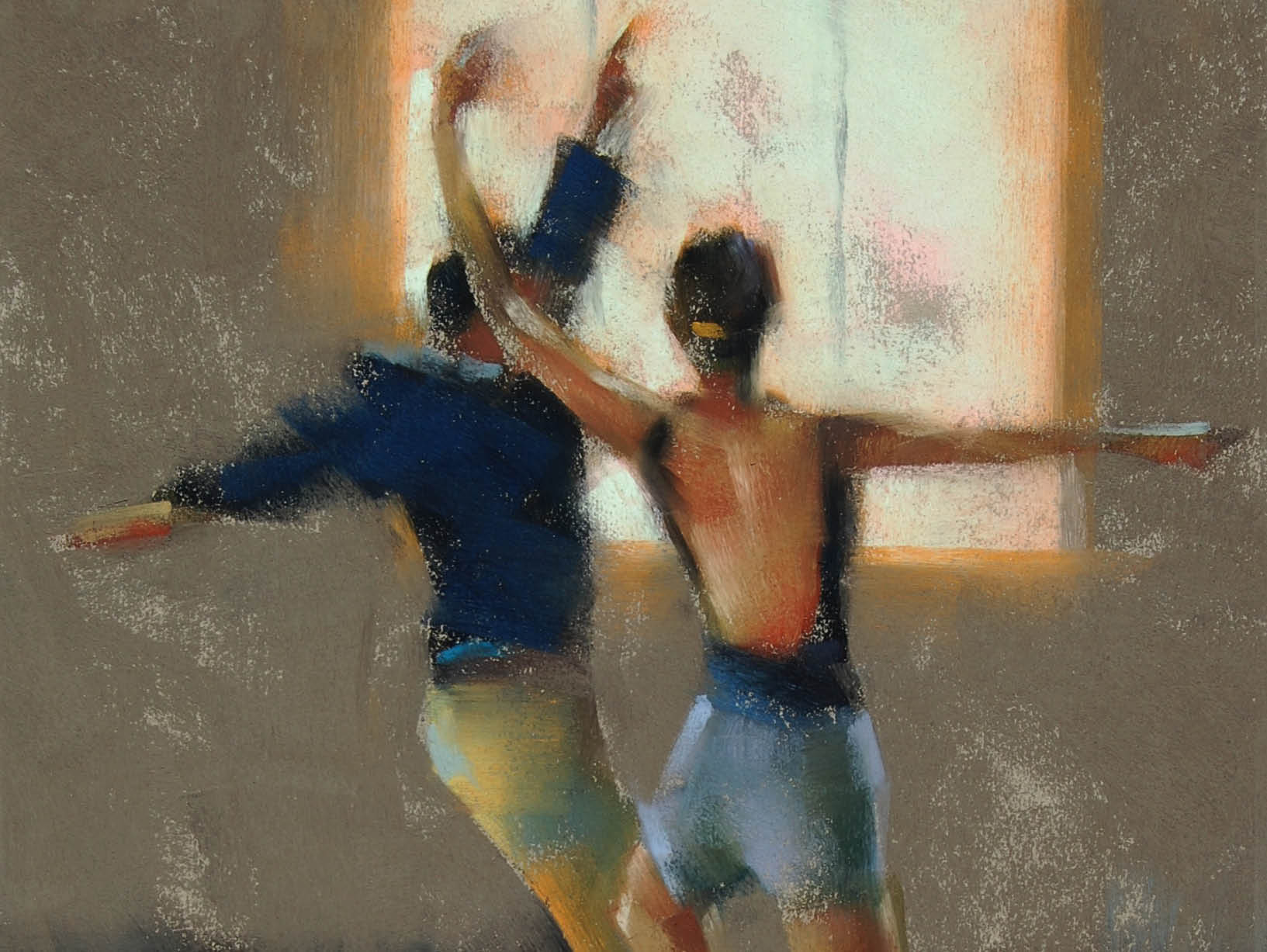
What is the atmosphere of your studio? Are you a morning person or a night owl?
I’m a midday to night owl type of painter. My studio is about 600 square feet with vaulted ceilings and plenty of light. The atmosphere is calm, which is advantageous when the painting process is unpredictable. I always have music playing and enjoy the solitude of working at the easel.
How do you handle creative frustration or burnout?
Frustration is part of the process and must be handled with patience. Many years ago, I
realized this endeavor was a marathon and not a sprint. If I’m frustrated, I always have tomorrow to figure it out. I can’t accept burnout because I’m completely unqualified for any other profession.
Has there been a point in your career where you felt like you made it?
I’ve had some truly nice achievements in my painting career, including awards, international
exhibits, magazine articles, and paintings purchased for prestigious public and private collections. But saying, “I’ve made it” would be counterproductive and misguided considering the vast scope of the art world.
How long have you been teaching workshops? How does teaching make you feel?
I taught my first workshop in 1999. I try to arrange four or five oil and/or pastel painting workshops a year across the country and occasionally internationally. In addition to getting me out of the studio and meeting new people, I truly enjoy sharing information that can help artists achieve their goals. It’s a great feeling to see someone grasp a concept that opens a new direction for their art.
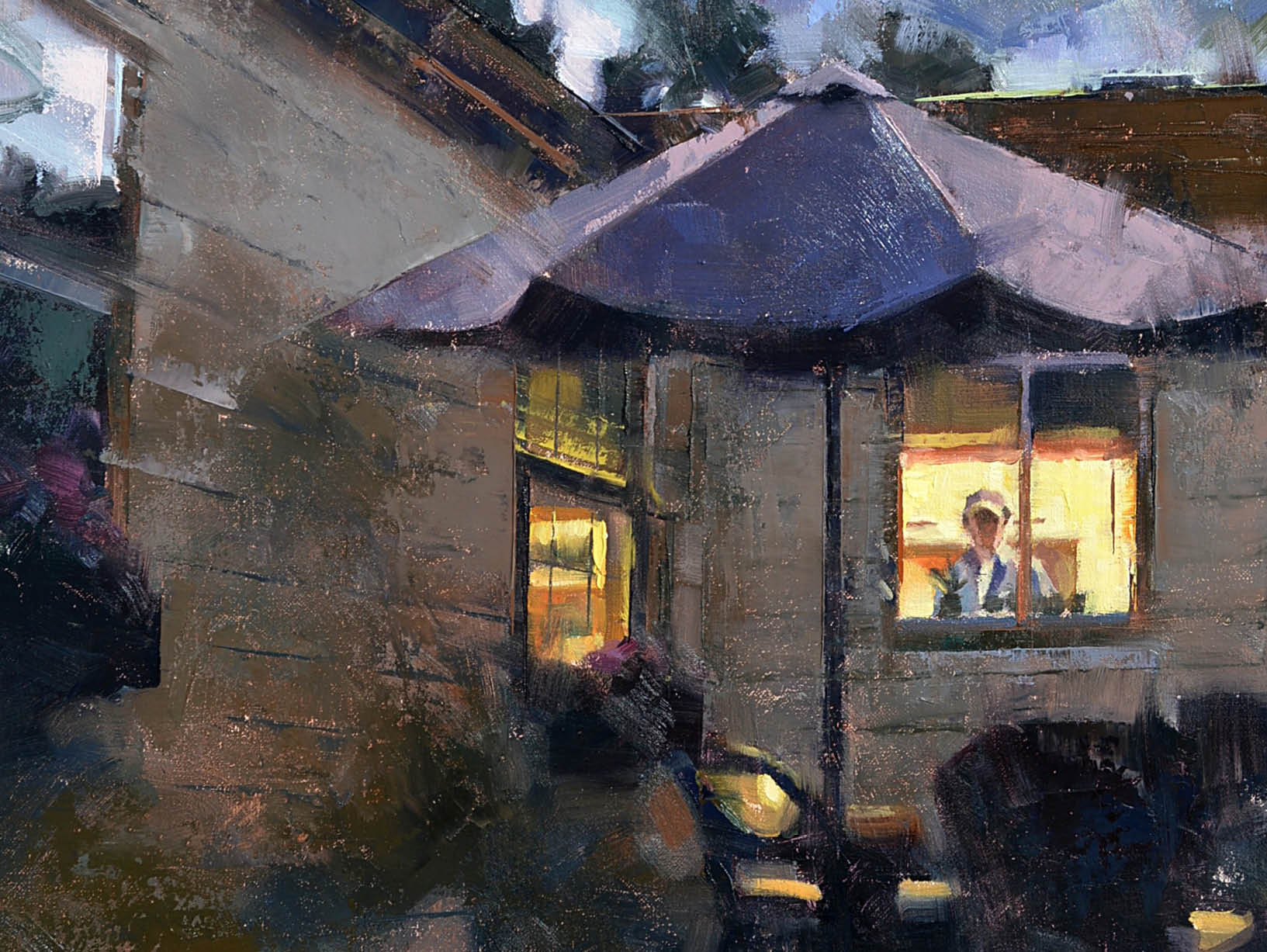
What advice would you give artists who are doubting themselves?
Doubt, frustration, and overthinking are very common and expected responses in an art career. My advice is to keep showing up every day with patience. This profession is entirely self-motivated and can be draining at times, but when goals are achieved, the feeling is
indescribable.
What does “living the dream” mean to you?
“Living the dream” to me is making a living while pursuing the dream. My experience in the
design and marketing world provided a great foundation to promote my art and work directly with clients. Living the dream requires both creating and selling. Maintaining my website and having a presence on Facebook and Instagram are crucial parts of my success.
In the alternate reality movie of your life, where would you be living and what job would you have?
I would say since I love history, a historian living in Europe, preferably Paris or Florence.
Do you think it’s possible to be satisfied as an artist?
Absolutely, with the knowledge that satisfaction comes with the challenge of the next painting, not just the past ones. I’m constantly challenging myself and seeking new directions, and feel very fortunate to be able to do what I do. That’s contentment.
For more info, visit desmondohagan.com
